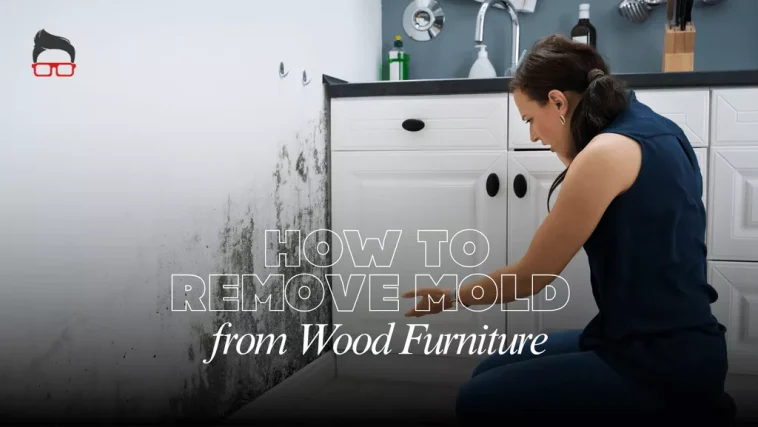Our guide explains in detail on how to remove mold from wood and identifies the mold early to prevent it before it gets worse. Mold is not only ugly but also a health hazard for your wood furniture and your health. Mold spores are very harmful if they get into your lungs so safety first. Wear a mask, rubber gloves and safety goggles then begin.
Molds cause serious damage on woods, like decay and weakening the structure of the wood. Just stop right there, no need to panic, yes, you can remove mold from wood effectively.
What is Mold And What are the Risks of Mold on Wood?
Mold is a fungus that grows on organic matter like wood which is moist. It spreads through its spores. Common species of mold are Aspergillus, Penicillium, Stachybotrys chartarum (black mold), Alternaria.
Risk involves compromising the structural integrity of the building. Mold gradually rot and decay causing serious threat to wooden structures. Common signs include black, white, green or red patches on the surface. However, it depends on the type of mold. Indication of very slimy texture and damp smell.
It’s important to pay extra attention in poor ventilation areas that don’t receive sunlight. as they are more likely to retain moisture and suffer water damage.
How To Clean Mold on Wood?
Step 1: First of all work in a well-ventilated area preferably outdoors. Wear protective gears like a n95 mask and gloves.
Step 2: Use a vacuum cleaner with a HEPA filter to gently remove any loose spores. Gently pressing it will do the work you don’t want to press the mold deeper into the wood. Dispose the vacuum bag as quickly as possible as you finish.
Step 3: Prepare a natural solution with white vinegar. Let’s talk about vinegar then we move on to the next solution. Fill a spray bottle with undiluted white vinegar. Vinegar likely kills around 83% of mold species. Second solution you may prefer is of Alcohol and water. Mix 1 cup rubbing alcohol with 1 cup water. Best for less mold areas and safe for most furniture.
Step 4: Spray the cleaning solution on a small hidden area, it’s better to first test for damage. If it feels safe, spray directly on moldy areas or onto a clean cloth. Use soft bristled brush and gently scrub in circular motion.
Step 5: Let the vinegar play its part, let it be for an hour or so. Place the furniture under sunlight, this results in killing the spores. Also moisture dries out if trapped inside the wood.
Step 6: After cleaning and once the furniture dries out completely apply oil to condition the wood. Also you can polish the wood to get back its original finish.
How to Prevent Mold on Wood In the Future?
Open windows regularly.
Don’t place furniture too close to walls.
If there’s a water leak immediately, take action. Fix the water leak, try quickly drying the area within two or three days.
Use of dehumidifiers in damp areas will help a lot.
Use fans to dry the areas where sunlight doesn’t reach.
Consider using mold resistant paints available in the market.
Take Professional Help
If mold covers a large area and keeps coming back after cleaning…its best to give a call to mold remediation professional. They have proper tools, proper protection to safely remove the mold from wood.
Remember to act fast, stay safe and don’t let moisture ruin your furniture. Preserve your pieces for the future.
Also Read:


